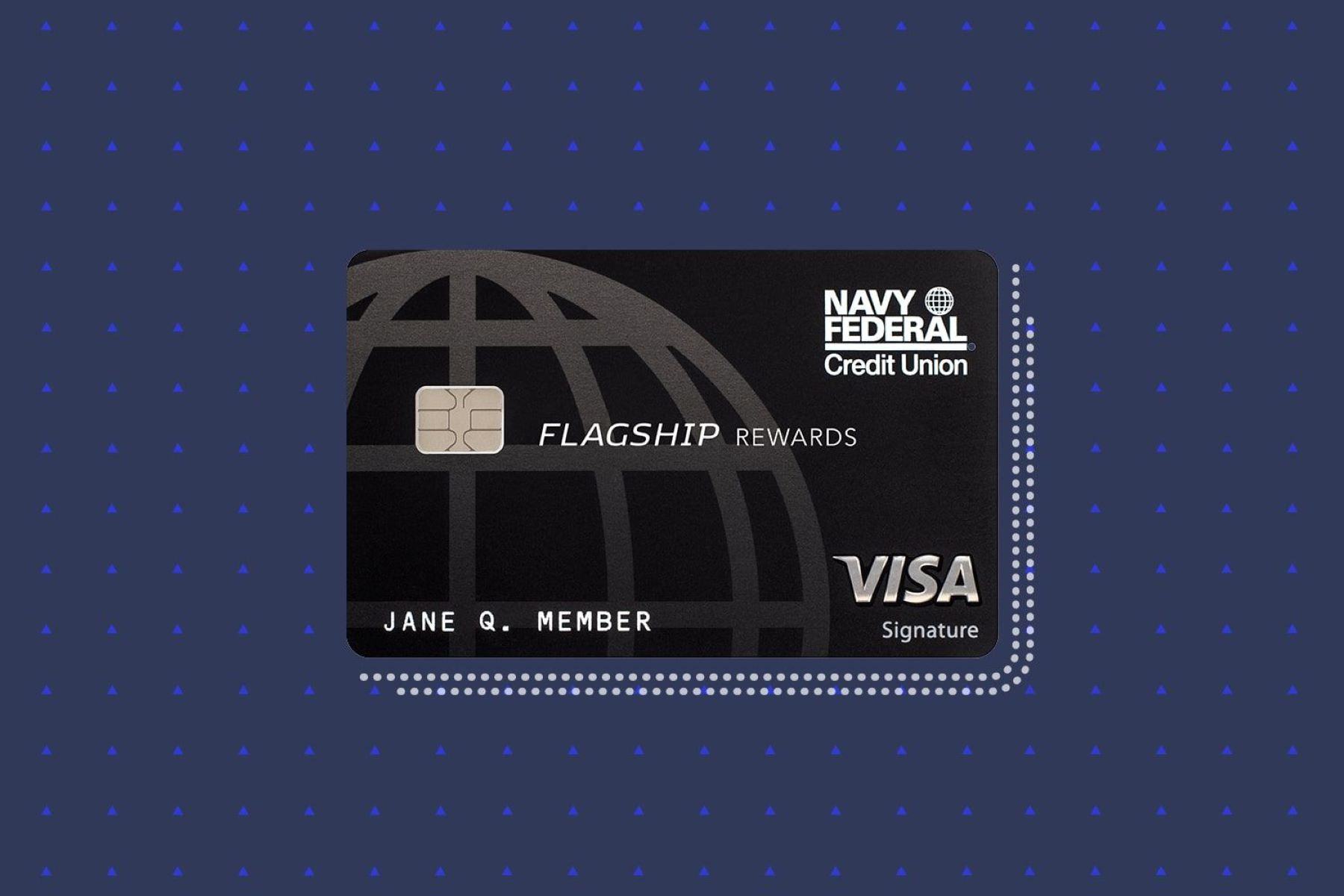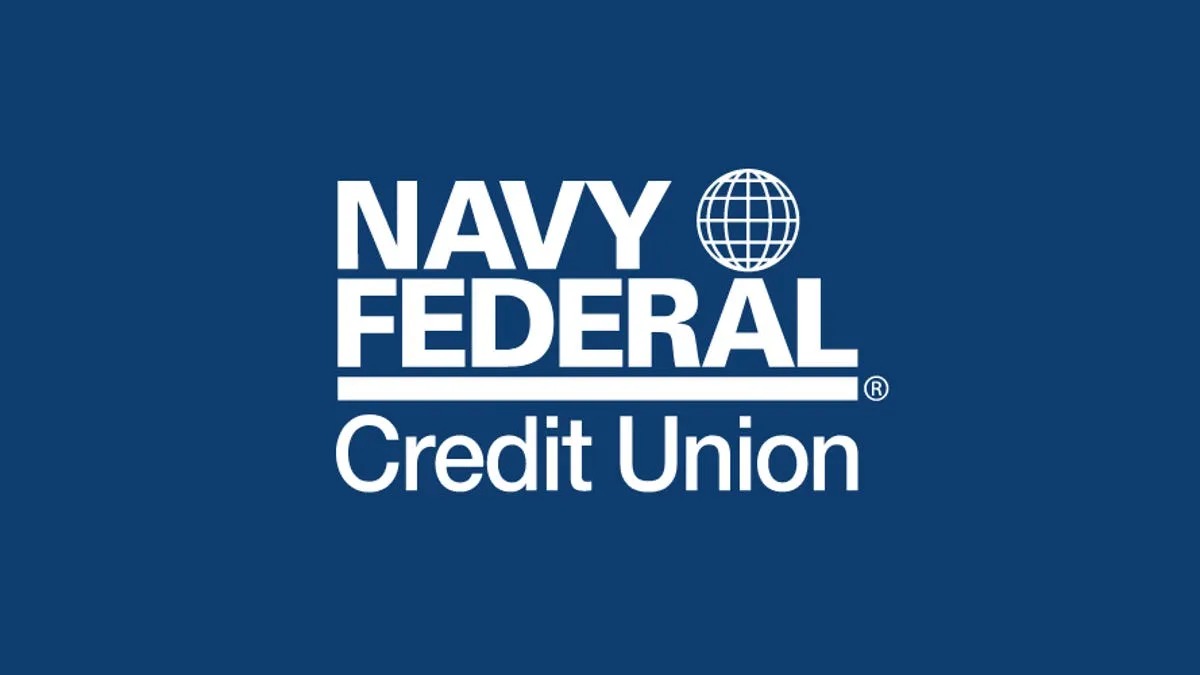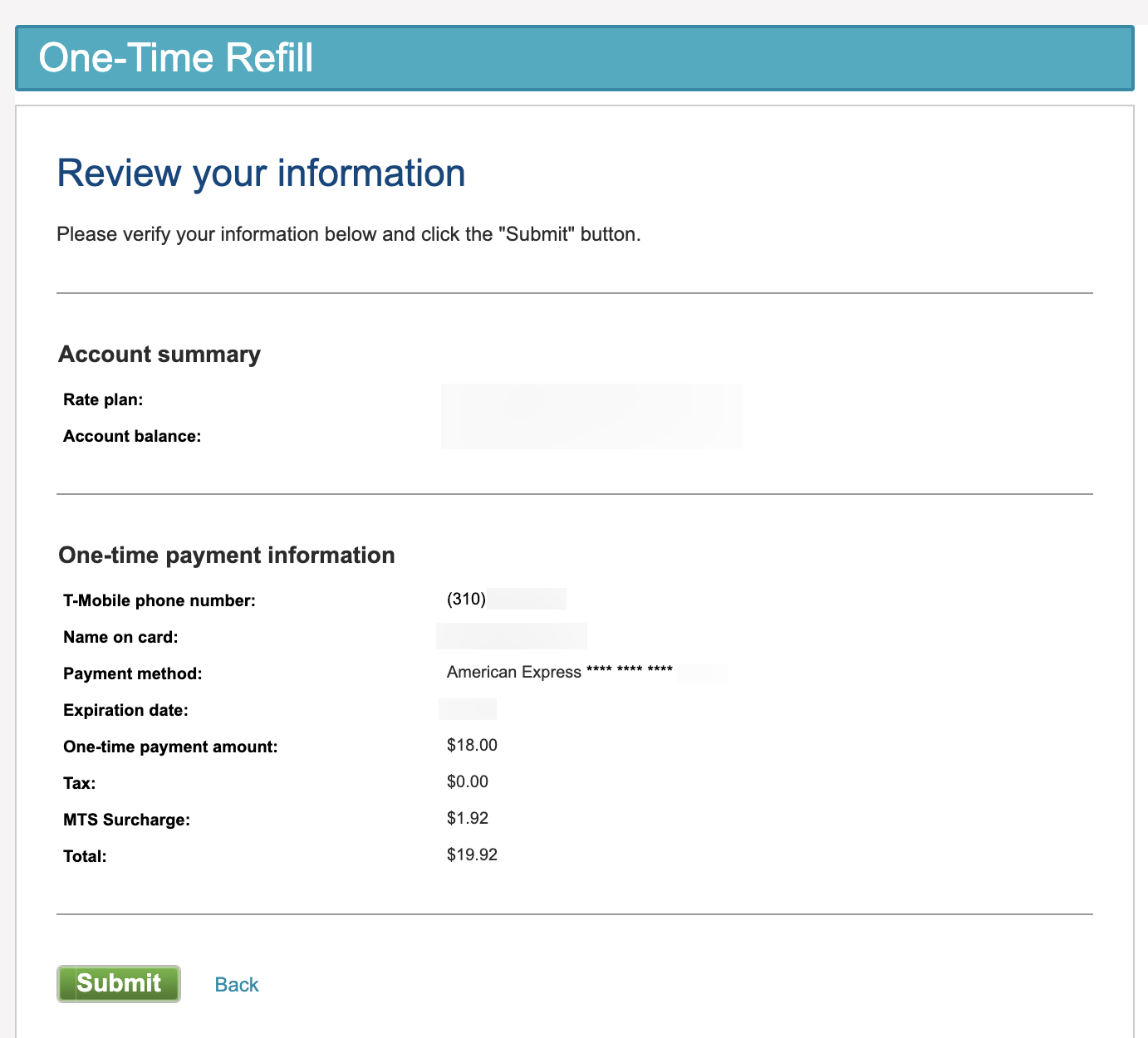

Finance
How To Increase Navy Federal Credit Limit
Published: March 5, 2024
Learn how to increase your Navy Federal credit limit and manage your finances more effectively. Take control of your financial future with these expert tips.
(Many of the links in this article redirect to a specific reviewed product. Your purchase of these products through affiliate links helps to generate commission for LiveWell, at no extra cost. Learn more)
Table of Contents
Introduction
Navigating the world of credit can be both exciting and daunting. Whether you're a seasoned credit card user or just starting to build your credit history, understanding how to manage your credit limit is crucial. In this comprehensive guide, we'll delve into the specifics of Navy Federal Credit Union's credit limits and explore effective strategies for increasing them.
Navy Federal Credit Union, a reputable financial institution serving the military, veterans, and their families, offers a range of credit card products designed to cater to diverse financial needs. Understanding how to maximize the credit limit on your Navy Federal credit card can provide greater financial flexibility and opportunities for leveraging credit responsibly.
As we embark on this journey, we'll uncover the essential factors that influence Navy Federal credit limits and explore actionable steps to increase them. By the end of this guide, you'll be equipped with the knowledge and strategies to confidently pursue a higher credit limit, enabling you to make the most of your credit card while maintaining sound financial practices. So, let's dive in and unlock the secrets to enhancing your Navy Federal credit limit.
Understanding Navy Federal Credit Limit
Before delving into the process of increasing your Navy Federal credit limit, it’s essential to grasp the fundamentals of how credit limits function within the context of Navy Federal Credit Union. A credit limit represents the maximum amount of credit extended to you by a financial institution, dictating the highest balance you can carry on your credit card. For Navy Federal credit cards, this limit is determined based on various factors, including your credit history, income, and overall creditworthiness.
Navy Federal Credit Union employs a meticulous approach to establishing credit limits, aiming to align them with each member’s financial profile. The credit limit assigned to you plays a pivotal role in shaping your purchasing power and overall financial flexibility. It serves as a safeguard for both you and the credit card issuer, ensuring that you can manage your spending within a reasonable threshold while demonstrating responsible credit utilization.
By comprehending the intricacies of your Navy Federal credit limit, you gain insight into how your credit card usage impacts your credit score and financial well-being. It’s important to recognize that your credit limit isn’t fixed and can be subject to adjustments based on your financial behavior and the issuer’s policies. With this understanding in place, you’re better equipped to explore the avenues for increasing your Navy Federal credit limit and leveraging it to your advantage.
Factors Affecting Navy Federal Credit Limit
When it comes to determining your Navy Federal credit limit, several key factors come into play, influencing the initial credit limit assigned to you and the potential for future increases. Understanding these factors is instrumental in managing your credit effectively and positioning yourself for a higher credit limit. Here are the primary elements that impact your Navy Federal credit limit:
- Credit History: Your credit history serves as a cornerstone in evaluating your creditworthiness. Navy Federal considers factors such as your payment history, length of credit history, and the types of credit accounts you hold. A strong credit history, characterized by timely payments and responsible credit utilization, can contribute to a more favorable credit limit.
- Income: Your income level plays a significant role in determining your credit limit. A higher income provides assurance of your ability to manage credit responsibly, potentially leading to a more substantial credit limit. Navy Federal assesses your income to gauge your capacity to handle credit obligations.
- Debt-to-Income Ratio: Navy Federal evaluates your debt-to-income ratio, which compares your monthly debt payments to your gross monthly income. A lower ratio indicates a healthier financial position and may positively influence your credit limit.
- Credit Utilization: Your current credit card balances relative to your credit limits, known as credit utilization, impact your creditworthiness. Maintaining a low credit utilization ratio demonstrates prudent credit management and can contribute to a favorable credit limit assessment.
- Payment History: Consistent, on-time payments reflect positively on your creditworthiness. Navy Federal considers your payment history to gauge your reliability in meeting financial obligations, which can influence credit limit decisions.
By comprehensively evaluating these factors, Navy Federal Credit Union aims to align credit limits with members’ financial capabilities while mitigating risk. Understanding how these elements interplay empowers you to proactively manage your finances and take strategic steps towards increasing your Navy Federal credit limit.
Ways to Increase Navy Federal Credit Limit
Increasing your Navy Federal credit limit can significantly enhance your financial flexibility and provide greater opportunities for managing expenses and unexpected costs. Here are actionable strategies to pursue a higher credit limit with Navy Federal Credit Union:
- Monitor and Improve Your Credit Score: Your credit score plays a pivotal role in influencing credit limit decisions. Regularly monitor your credit report for inaccuracies and work on enhancing your credit score by maintaining a healthy payment history and minimizing outstanding debts.
- Request a Credit Limit Increase: Navy Federal allows members to request a credit limit increase, providing an opportunity to present your case for a higher limit based on improved financial circumstances and responsible credit management. Submitting a formal request demonstrates your commitment to prudent credit usage.
- Update Your Income Information: Ensure that your income information with Navy Federal is accurate and up to date. A higher income can bolster your case for a credit limit increase, showcasing improved financial stability and capacity to handle additional credit.
- Utilize Your Card Responsibly: Demonstrate responsible credit usage by consistently paying your bills on time and keeping your credit utilization low. Responsible card usage reflects positively on your creditworthiness and can strengthen your case for a higher credit limit.
- Apply for a New Credit Card: If you have successfully managed your Navy Federal credit card and improved your financial standing, applying for a new credit card with a higher limit can serve as an indirect method of increasing your overall credit availability.
Implementing these strategies empowers you to actively work towards securing a higher Navy Federal credit limit, aligning your credit capabilities with your evolving financial needs. By strategically managing your credit profile and engaging with Navy Federal to explore credit limit increase options, you can position yourself for enhanced financial flexibility and greater peace of mind.
Applying for a Credit Limit Increase
When you’re ready to pursue a higher credit limit with Navy Federal Credit Union, the process typically involves submitting a formal request for review. Here’s a comprehensive guide on applying for a credit limit increase with Navy Federal:
Evaluate Your Financial Standing: Before initiating the request, assess your financial situation to ensure that you have made significant strides in improving your creditworthiness. Review your credit report, payment history, and overall financial stability to gauge your readiness for a credit limit increase.
Access Your Account Online: Log in to your Navy Federal online account or access the mobile app to navigate to the credit limit increase request section. Familiarize yourself with the specific guidelines and requirements outlined by Navy Federal for submitting a credit limit increase request.
Submit the Request Form: Complete the credit limit increase request form, providing accurate details regarding your current income, employment status, and any relevant financial updates. Clearly articulate the reasons for seeking a credit limit increase and highlight any significant improvements in your financial profile.
Supporting Documentation: In some cases, Navy Federal may request additional documentation to substantiate your income and financial stability. Be prepared to provide any requested documents promptly to facilitate the review process.
Review and Decision: Upon receiving your request, Navy Federal will assess your financial standing and credit history to determine the feasibility of approving a credit limit increase. The decision may be influenced by factors such as your payment history, credit utilization, and overall creditworthiness.
Notification of Outcome: Once the review process is complete, you will receive a notification from Navy Federal regarding the status of your credit limit increase request. If approved, the new credit limit will be reflected in your account, empowering you to leverage the enhanced credit availability responsibly.
By following these steps and engaging proactively with Navy Federal, you can navigate the process of applying for a credit limit increase with confidence, positioning yourself for greater financial flexibility and opportunities for responsible credit utilization.
Tips for Managing a Higher Credit Limit
Securing a higher credit limit with Navy Federal Credit Union opens up new possibilities for managing your finances and addressing larger expenses. However, it’s essential to approach this increased credit availability with a strategic and responsible mindset. Here are valuable tips for effectively managing a higher credit limit:
- Prudent Spending Habits: While a higher credit limit provides expanded purchasing power, it’s crucial to maintain disciplined spending habits. Avoid unnecessary splurges and strive to use your increased credit limit for essential and planned expenses.
- Monitor Your Credit Utilization: With a higher credit limit, it’s important to keep a close eye on your credit utilization ratio. Aim to keep your credit card balances well below the new limit to demonstrate responsible credit management and safeguard your credit score.
- Regularly Review Your Statements: Stay vigilant by reviewing your credit card statements regularly. This practice helps you track your spending, identify any unauthorized charges, and maintain awareness of your overall credit usage.
- Set Clear Payment Goals: With an increased credit limit, establish clear payment goals to ensure that you can comfortably manage the potential higher balances. Strive to pay more than the minimum amount due to minimize interest charges and expedite debt repayment.
- Utilize Credit for Strategic Purposes: Leverage your higher credit limit for strategic financial moves, such as consolidating high-interest debt or addressing significant expenses. Thoughtful utilization of your credit can yield long-term financial benefits.
- Communicate with Navy Federal: Maintain open communication with Navy Federal regarding any changes in your financial circumstances or challenges in managing the higher credit limit. Proactive engagement can help you navigate potential concerns effectively.
By integrating these tips into your financial management approach, you can harness the advantages of a higher credit limit while mitigating the associated risks. Responsible credit utilization and proactive financial stewardship are key to maximizing the benefits of an increased credit limit while safeguarding your overall financial well-being.
Conclusion
As we conclude our exploration of increasing your Navy Federal credit limit, it’s evident that navigating the dynamics of credit management requires a blend of strategic planning, financial mindfulness, and proactive engagement with your credit card issuer. Understanding the factors that influence credit limits, as well as the actionable strategies for securing a higher limit, empowers you to optimize your credit card’s potential while maintaining sound financial practices.
Navy Federal Credit Union’s commitment to serving the unique financial needs of military members, veterans, and their families is underscored by its approach to credit limit management. By aligning credit limits with members’ evolving financial capabilities and providing avenues for credit limit increases, Navy Federal supports its members in achieving greater financial flexibility and security.
Securing a higher credit limit with Navy Federal is a testament to your responsible credit management and financial progress. It signifies the trust placed in you as a creditworthy member and presents opportunities for addressing larger expenses and pursuing strategic financial goals.
As you embark on the journey of managing a higher credit limit, remember that prudent financial habits, disciplined spending, and proactive communication with Navy Federal are essential elements in leveraging your increased credit availability effectively. By integrating these principles into your financial approach, you can harness the benefits of a higher credit limit while safeguarding your financial well-being.
Ultimately, the pursuit of a higher credit limit with Navy Federal is not just about accessing additional credit; it’s about embracing the responsibility that comes with it and utilizing it as a tool for achieving your financial aspirations. With the knowledge and insights gained from this guide, you’re well-equipped to navigate the intricacies of credit limit management and make informed decisions that align with your financial objectives.














